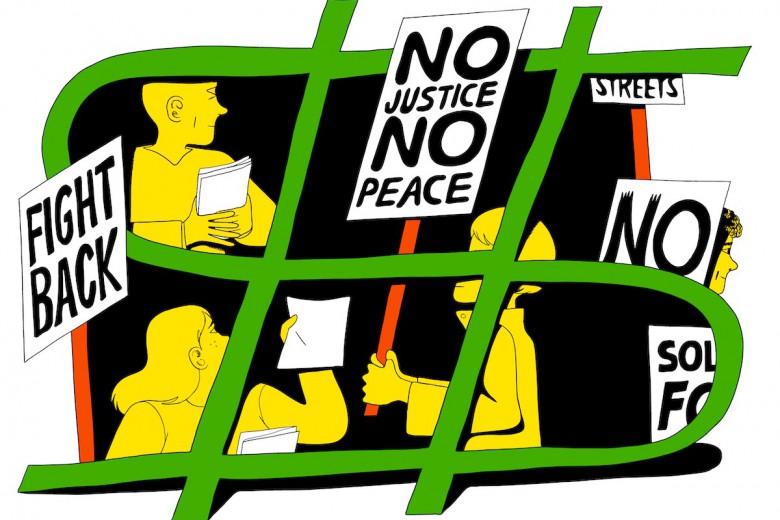
Station 20 West is not just a model of an innovative community-based response to endemic poverty and the ill health that results from that poverty; it’s also an example of a community rallying around a good idea and bringing it to fruition, overcoming significant challenges in the process. The good idea was to launch a multi-use community economic development initiative that would help address the gross inequalities that exist in Saskatoon. Thanks to the overwhelming support of the community, the project is now back on track after nearly being derailed by the provincial government.
The shocking news of Station 20 West’s potential demise blindsided a community that was already reeling.
Saskatchewan’s largest city, according to a groundbreaking 2006 study, contains the sorts of extreme health disparities between rich and poor neighbourhoods generally associated with cities in much poorer countries. As shocking as the study’s findings may have been, the current provincial government’s response was even more surprising. Shortly after coming to power, and one year after the study’s release, the Saskatchewan Party government announced in March 2008 that it would be withdrawing already-promised provincial funding for Station 20 West, a project in Saskatoon’s core that was specifically geared towards addressing these health disparities and the lack of basic services. Nine months after the funding was pulled, however, the project is going ahead despite the resistance of the provincial government.
According to “Health Disparity by Neighbourhood Income,” published in the Canadian Journal of Public Health in November 2006, residents of Saskatoon’s core neighbourhoods are 15 times more likely to contract a sexually transmitted infection, 15 times more likely to attempt suicide, 35 times more likely to get Hepatitis C, and 13 times more likely to have type 2 diabetes than residents of other neighbourhoods. With all of these increased risks, a core neighbourhood resident is 2.5 times more likely to die in any given year. The infant mortality rate is three times higher than elsewhere in the city.
Saskatoon’s core is the most economically disadvantaged area of the city and has been without access to a full-service grocery store for many years. This lack of services contributes to the poor health of the neighbourhoods. Community organizers have long recognized that a broadly based, multifaceted approach to addressing poverty is the only way to reduce the shocking health disparities within the city. It was in this context that Station 20 West was born.
Station 20 West was the product of collaboration among a number of community-based organizations. It was to serve as a one-stop service shop addressing issues such as health, food security and economic development in the core neighbourhoods. Station 20 West was to be located next to 56 new affordable housing units and a branch of the public library, and was to include a broad range of services including a community health clinic, a student-run after-hours clinic, a dental outreach clinic, offices for several community-based organizations, a university outreach education centre and a member-owned co-operative grocery store. These were all to be housed in a building that would meet the highest level of LEED (Leadership in Energy and Environmental Design) certification. The expanded clinical services, alongside community economic development organizations and access to good, affordable groceries would have gone a long way toward addressing the health needs of the core.
In recognition of the importance and quality of the Station 20 West initiative, and having extensively vetted it, the provincial NDP government dedicated $8 million to the project in its spring 2007 budget.
In March of 2008, however, the recently elected Saskatchewan Party government informed Station 20 West board members that the dedicated funds were being rescinded. The justifications – given only after the fact – spoke of insufficient community consultation or involvement of First Nations and Métis organizations, as well as ideological reluctance to support a “private” grocery store with public funds. Premier Brad Wall dismissed the project as a “mall development.”
The Wall government’s ill-considered decision to rescind the funding for Station 20 West shocked the people of Saskatoon, triggering a firestorm of criticism of the decision and a groundswell of support for the threatened project. In April 2008, in one of the largest demonstrations in Saskatchewan in decades, over 2,500 protesters took to the streets to show their support for Station 20 West.
Determined that the project would go ahead in some form, the organizers scaled it back to reflect new financial circumstances and launched an energetic fundraising campaign to make up the remaining shortfall. The rapidly formed Friends of Station 20 West group recruited thousands of online members in a few short days, many of whom came out to subsequent meetings and continue to organize fundraising and awareness campaigns.
The organizers have unveiled a more modest Station 20 West plan, one which will cost a great deal less ($3 million, rather than $13 million) but will still host a number of services. The Good Food Junction and Café, the Child Hunger and Education Project, the Quint Development Corporation, Heifer International and the Elizabeth Fry Society will all be housed in the space, as originally envisioned. The new building will still be LEED certified, though at a lower classification of environmental sustainability. It will still boast an outdoor stage and container gardening. While the clinical and educational services will be missed, the remaining partners, alongside the affordable housing and library next door, will still enjoy a synergy where their efforts are enhanced by the other services that have chosen to co-locate.
Some progress has also been made in rebuilding some of the relationships damaged during the period immediately following the removal of the funds. The Station 20 West board met recently with representatives of the Saskatoon Community Clinic, the membership of which changed significantly in recent board elections. An expanded West Side Community Clinic will likely locate nearby and will continue to work in positive partnership with Station 20 West. The board is seeking to partner with more First Nations and Métis groups. An Outreach Education Centre for the University of Saskatchewan is also being proposed for the new building.
Faith Bodnar, the new coordinator of the project, says that “While the size of the building and the scope of the project have changed, the concept and the dream have not.” The project will forge ahead because the original concept was solid and the need for such an intervention persists. Community support for the project includes major donations from the Saskatchewan Union of Nurses and Canadian Union of Public Employees – $100,000 each – as well as a donation of $500,000 from an anonymous Saskatoon corporate donor. Perhaps more impressive is the $225,000 already raised from hundreds of individual donors. These financial contributions show that the people of Saskatoon have not abandoned Station 20 West or been deterred by its tribulations. A capital campaign is now under way to raise the remainder of the $3 million by February of 2009, with construction set to begin in May of 2009. There is still a long way to go, but organizers are confident that Station 20 West is back on track.


_780_520_90_s_c1.jpg)



